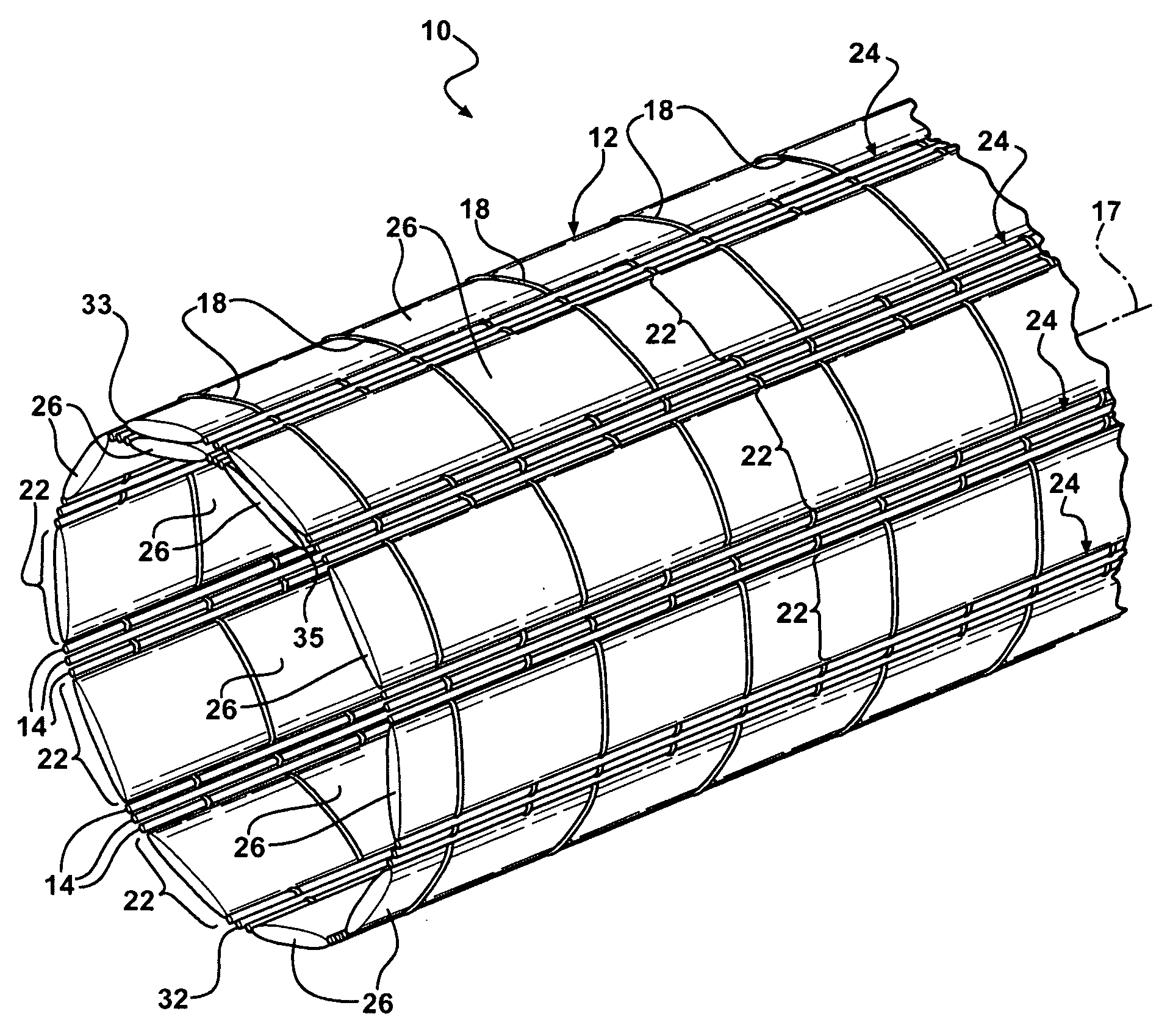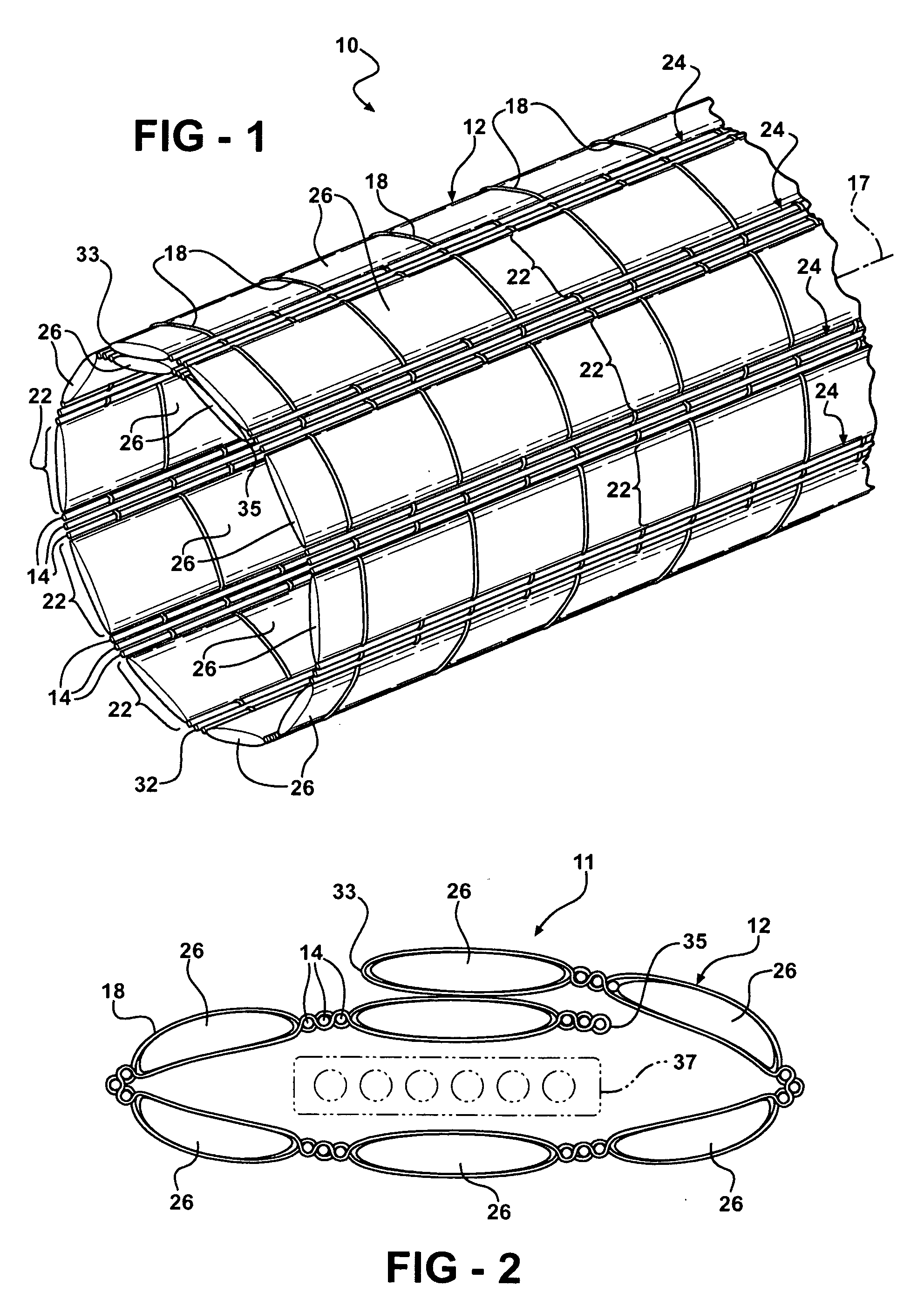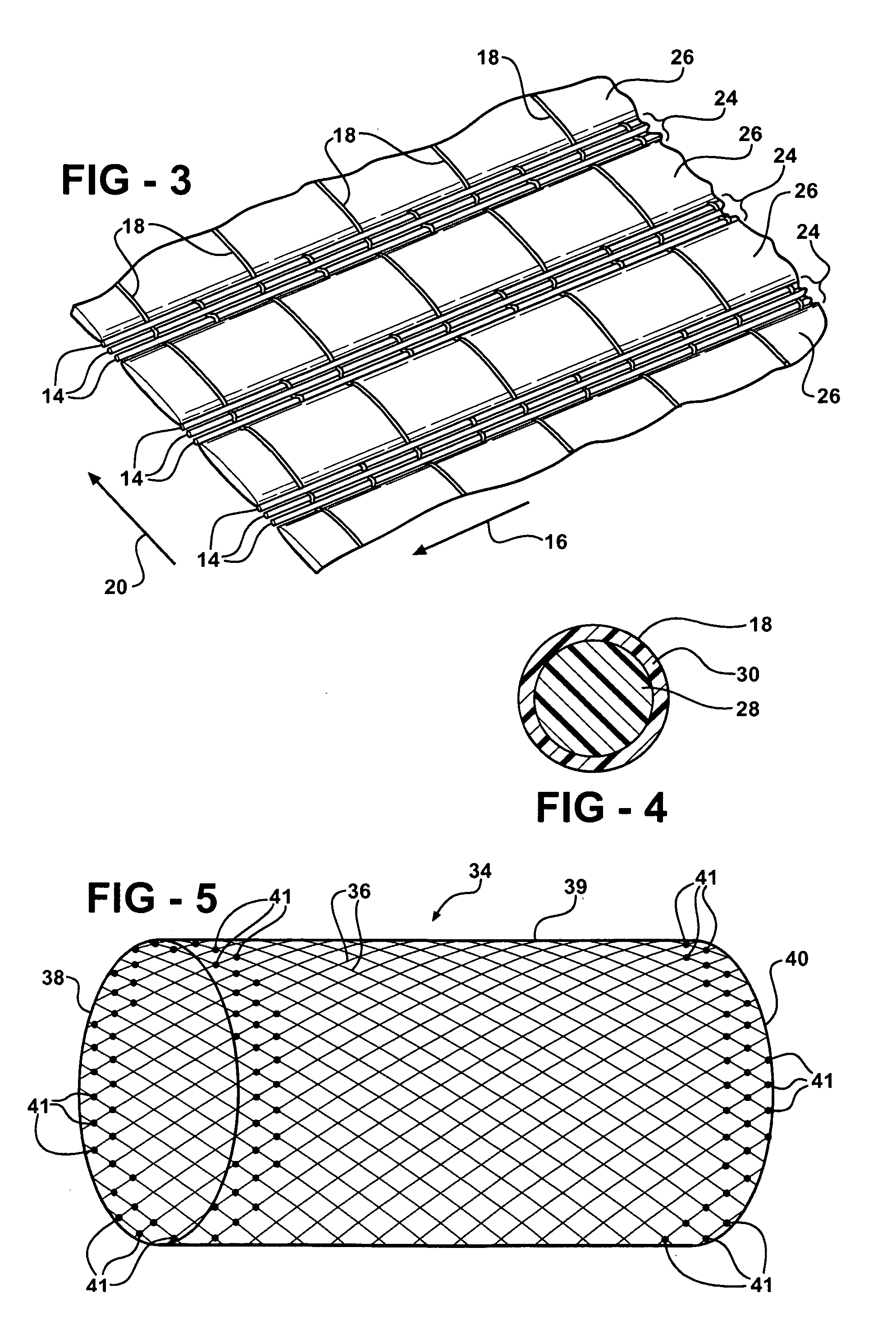Fabric for end fray resistance and protective sleeves formed therewith and methods of construction
a technology of end fraying resistance and protective sleeves, applied in the direction of pedestrian/occupant safety arrangements, braids, vehicular safety arrangements, etc., can solve the problems of reducing the useful life of the sleeve, affecting the operation of the sleeve, and damage to the wire harness, so as to prevent the sleeve from fraying
- Summary
- Abstract
- Description
- Claims
- Application Information
AI Technical Summary
Benefits of technology
Problems solved by technology
Method used
Image
Examples
Embodiment Construction
[0022]Referring in more detail to the drawings, FIGS. 1 and 2 illustrate protective textile sleeves 10, 11 according to presently preferred embodiments, wherein the sleeves 10, 11 are similar, however the sleeve 10 is generally cylindrical in lateral cross-section, while the sleeve 11 is generally oval or flat in lateral cross-section. Given the similarities, other than finished shape, the sleeves are generally the same, and thus, the same reference numerals are used to identify their features. The sleeves 10, 11 include a fabric, also referred to as a substrate 12, wherein the substrate has interlaced yarns that can be woven or knitted. By way of example and without limitations, the illustrated sleeves 10, 11 are woven. As best shown in FIG. 3, the substrate 12 includes a plurality of first filamentary members 14 that are oriented in a first direction indicated by arrow 16. For a woven substrate, the arrow 16 corresponds to the warp direction, which corresponds to a longitudinal ax...
PUM
| Property | Measurement | Unit |
|---|---|---|
| Length | aaaaa | aaaaa |
| Shape | aaaaa | aaaaa |
| Electrical conductor | aaaaa | aaaaa |
Abstract
Description
Claims
Application Information
 Login to View More
Login to View More - R&D
- Intellectual Property
- Life Sciences
- Materials
- Tech Scout
- Unparalleled Data Quality
- Higher Quality Content
- 60% Fewer Hallucinations
Browse by: Latest US Patents, China's latest patents, Technical Efficacy Thesaurus, Application Domain, Technology Topic, Popular Technical Reports.
© 2025 PatSnap. All rights reserved.Legal|Privacy policy|Modern Slavery Act Transparency Statement|Sitemap|About US| Contact US: help@patsnap.com



